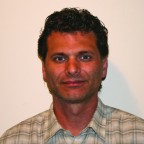
I’ve lived in Delavan, Illinois, for four years now. In the beginning, my life was pretty much engulfed by a new business in Peoria and a new marriage. In the last year, however, much has seemed to settle. My wife, Leann, and I decided we wanted to give back to our community by getting involved in local organizations. With my background in business, a challenge was presented to me to begin the Delavan Economic Development Council. Knowing much about opening a single business—but only little about the promotion of a small business community—I decided to give my time and effort to this new challenge.
To those unfamiliar with Delavan, it is a small community of about 1,800, just 30 miles southeast of Peoria. I often tell people, “To be in Delavan, you have to want to go there, because it’s on the way to nowhere.” I don’t mean this in a derogatory manner. In fact, this is one of the reasons we relocated to Delavan. It’s much like living in Mayberry, USA. We know, or at least recognize, most people in town. We have a grocery store, two gas stations, two pubs, two restaurants, a car dealership, a flower shop, an art gallery, a pharmacy and an antique mall, to name but a few of the businesses. Add a strong school system and a few churches, and one can easily see a strong community foundation.
However, Delavan, like many small communities in rural America these days, is in a state of flux, though it remains viable as a small independent community. Rich in a historical context, Delavan’s average citizen age is increasing. Our businesses often struggle as people commute to other communities for work and, consequently, purchase their goods and services elsewhere.
I view our community as being on a bubble. Slide off the left side, and we become little more than a gathering of houses in a field. Slide off the right, and we thrive and grow. In this context, Delavan has one of two options. The first takes us off the left side. We do nothing and become one of many ever-shrinking communities whose population dwindles and meets few of the basic needs of its citizens. In essence, it becomes a “ghost town,” and citizens meet their needs supporting other communities. To slide off the right, we must meet the needs of the current citizens and businesses, but also attract new citizens and businesses, thus improving the functionality and attractiveness of our community. If the second occurs, the community becomes richer economically and culturally. The community also enhances its likelihood of a thriving future.
With these ideas in mind, I set out to initiate the Delavan Economic Development Council (DEDC). Looking to recruit others in the community holding a similar vision for Delavan, I began speaking to many in town who envision a positive—not skeptical—community future. Once I recruited four other people, we began to brainstorm ideas, beginning with what Delavan would not become. Delavan would not become a Peoria, Lincoln, or even Pekin, which have a plethora of businesses on which to build. Second, it would not likely become a Galena, or similar tourist attraction. Our group believes that while our community is appealing to many, the chances of actually thriving on tourism for our livelihood are slim. With this in mind, we looked back to basics.
We believed that Delavan businesses have to meet the basic needs of its citizens. Housing, education and transportation support are accessible. Food—i.e., a grocery store—however, had not been local for some time, and many citizens were traveling more than 25 miles round-trip for their food needs. This recently changed when Delavan Finer Foods opened with the help and efforts of one of the town’s business patriarchs.
Unlike our larger neighbors, maintaining and supporting these basic businesses is fundamental to our survival and growth. All communities are impacted if a business fails, but the impact of a business failure in a smaller community can have tragic consequences. Delavan’s primary downtown is two blocks long, with businesses on both sides. If just two or three of them fail, it is perceived as though the whole business community is dying, and this can begin a cascade effect. In contrast, should a business in a larger community fail, depending on its size or customer base, few people might even notice. Thus, the concept of maintaining and supporting current individual businesses takes on a different meaning to the community as a whole.
Second, we believed that we needed a strong relationship with the local government to make sure issues such as infrastructure were addressed. Our city council has been upgraded in many ways, including, hiring a city administrator and developing a conceptual plan. It is our perspective that the city government plays a vital role in making the city attractive and functional. Through the development, implementation and enforcement of city ordinances, and providing for the community’s maintenance, the city government provides the necessary infrastructure for current and new businesses.
In contrast, our role as the Economic Development Council is to identify current business needs while actively marketing and recruiting new businesses to Delavan. We believe that, given the overlapping goals of the public and private sectors, it is advantageous for the DEDC and our local municipal leadership to be positive, supportive and proactive. In short, it is the city government’s job to prepare a business-friendly canvas, while it is the DEDC’s job to paint the business landscape. To this end, we also requested that a city council liaison be appointed to assist us with the process.
Our EDC—Roger Rawlings, Bill Wiemer, Julie Vaughn, Mark Williams and myself—along with the citizens of small-town America, believe there is something special about communities like ours and want to continue their traditions. The challenge for us is to remain faithful to those small-town traditions while upgrading and improving our economics so that this small town is here for future generations to enjoy. iBi

